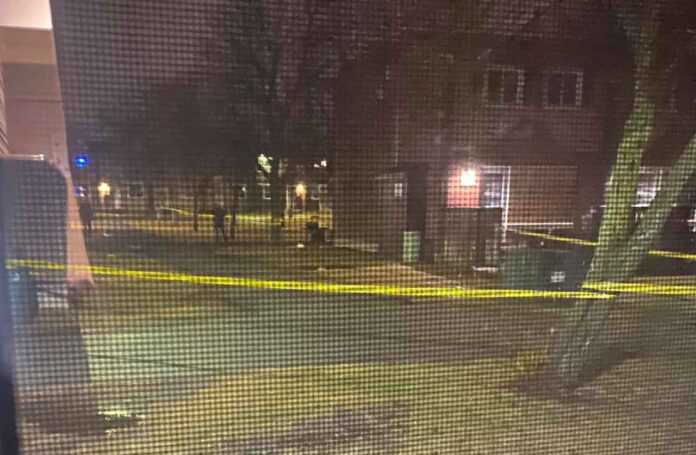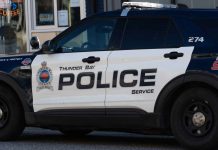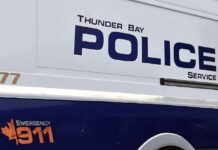THUNDER BAY, ON – The rise of illegal drug activity and “trap houses” in communities across Canada, including Thunder Bay, has created safety and quality-of-life concerns for residents. A “trap house” is a property used primarily for the sale, use, or production of illegal drugs, often leading to increased crime and disturbances in surrounding areas.
When you hear about Canada’s “Opioid Overdose Crisis” often those deaths are due to the illegal drugs sold out of these “Trap Houses”.
There have been too many families who have had to deal with the trauma and turmoil caused by overdoses, drug addiction, and the resulting problems.
Thunder Bay Police Service encourages residents to be vigilant and informed about how to recognize these properties and safely report them to help keep neighborhoods safe.
What is a Trap House?
A trap house is a property where illegal drug activities are conducted. These locations can operate as hubs for drug distribution, often with high levels of traffic at all hours, and sometimes become a site of other criminal activities, such as theft or violence.
The term “trap house” has its roots in the American drug trade, specifically within the hip-hop culture of the 1990s. It refers to a location, typically a run-down house or apartment, used for the production, packaging, and sale of illegal drugs, particularly crack cocaine. The term “trap” itself is slang for a location where drugs are sold.
The name “trap house” is derived from the cyclical nature of drug addiction and the feeling of being trapped in the cycle of buying and using drugs. Dealers often target vulnerable individuals struggling with addiction, creating an environment where it’s easy to get trapped in a cycle of dependency and exploitation.
The trap house becomes a place where people feel stuck, unable to escape the clutches of addiction and the control of the dealers.
The presence of a trap house in a neighborhood can significantly affect community safety, increase risks for residents, and reduce property values.
Recognizing the Signs of a Possible Drug Trap House
Trap houses often have distinct signs that may include:
- Frequent Short-Term Traffic: A high volume of foot or vehicle traffic, especially with visitors staying only a few minutes at a time, can indicate drug transactions.
- Odd Hours: Unusual activity, with people coming and going at all hours of the night and day, may signal drug activity.
- Covered or Boarded Windows: Some trap houses will have windows covered or boarded up to prevent visibility into the home.
- Strong Chemical Smells: Unpleasant odors, particularly strong chemical smells like ammonia or acetone, may indicate drug production.
- Security Cameras and Barricaded Entrances: While security cameras can be common, if a house has excessive security measures, it may suggest an attempt to monitor or secure illegal activity.
- Suspicious Behavior and Loitering: Unusual loitering around the property, including strangers in the neighborhood who are unfamiliar to residents, can also be a red flag.
- Property Neglect: Drug houses are often neglected, with a lack of regular maintenance, broken windows, excessive trash, or unkempt lawns.
- Frequent Visitors with Known Drug-Related History: Sometimes residents may recognize known individuals involved in drug activity frequenting the house.
While none of these signs alone prove that a property is a trap house, multiple indicators together may signal illegal drug activity.
How to Report Suspected Trap Houses Safely and Anonymously
If you suspect a property in your neighborhood may be involved in illegal drug activities, reporting it to the Thunder Bay Police Service can be a vital step in ensuring the safety of your community. Here’s how to do it safely:
- Anonymous Reporting through Crime Stoppers:
- Call Crime Stoppers at 1-800-222-8477 (TIPS). This hotline allows you to report information without revealing your identity.
- Submit an Anonymous Tip Online: You can provide details through the Crime Stoppers website at www.p3tips.com, where your IP address and personal information are not tracked.
- Direct Reporting to Thunder Bay Police Service:
- For non-emergencies, call the Thunder Bay Police Service at (807) 684-1200. You can ask to remain anonymous, but if you provide your information, it can help police follow up more effectively.
- In an Emergency Situation: If you observe dangerous behavior, such as violent activity associated with a suspected drug house, do not approach the property. Instead, call 9-1-1 to report the immediate threat.
- Document Your Observations: If you feel safe doing so, keep a record of suspicious activities, including dates, times, and descriptions of vehicles or individuals frequenting the property. Avoid directly engaging with individuals at the suspected drug house, as this could put you at risk.
- Neighborhood Watch Programs: Consider joining or forming a neighborhood watch group. Neighborhood watches create a sense of community security and provide a collective way to monitor and report suspicious activity.
Why Reporting Matters
Drug trap houses can harm neighborhoods by attracting additional crime, such as theft or violence, and exposing community members to dangerous situations. By reporting suspected drug houses, you contribute to a safer environment and help local law enforcement take proactive measures to address drug activity.
The Thunder Bay Police Service relies on the eyes and ears of the community to identify problem areas and to keep neighborhoods safe.
What Happens After You Report?
After receiving a report, the Thunder Bay Police Service will begin by gathering information and assessing the situation. This may include increased surveillance of the property or further investigation by the Thunder Bay Police.
If there is sufficient evidence, police may take steps to secure a search warrant and intervene to dismantle the operation.
Reporting suspected drug houses is a critical part of maintaining community safety and well-being. The Thunder Bay Police Service encourages residents to stay vigilant and to use the available resources to report concerns anonymously and securely. Together, we can work toward a safer and healthier Thunder Bay.







